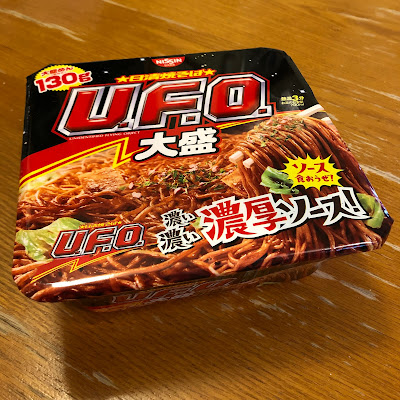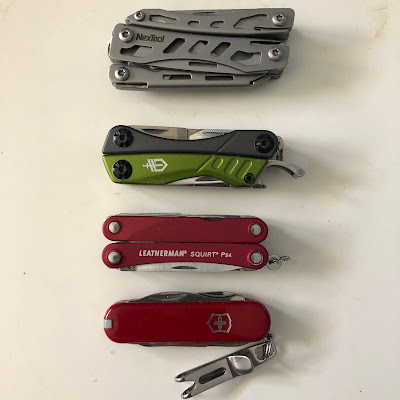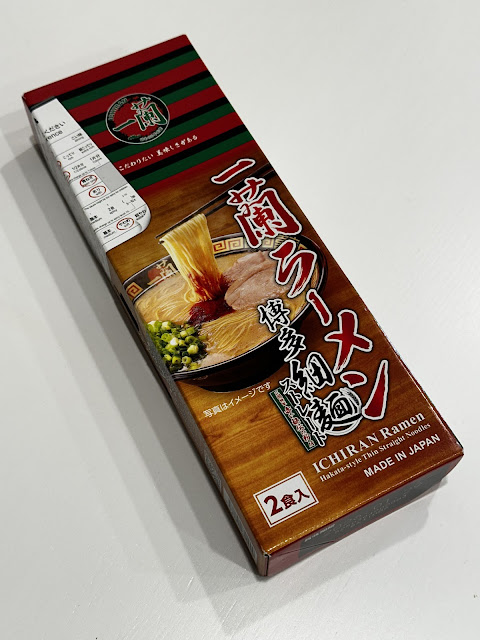Three Day Itinerary and Highlights For Tokyo and Kyoto
It is really difficult to see Tokyo or Kyoto in a few days as there is just so much to see and do. Whenever I drop in on a Japan travel forum there is almost always someone planning on spending two or three days in these cities before moving on to another place in Japan. You can either focus on specific places to see them in more detail or see a list of highlights in this limited amount of time.
Hit the Highlights Itinerary Approach
For the highlights route, the analogy would be like seeing the highlights of the British Museum or the Louvre or the Smithsonian in less than two hours. On my first trip to Britain, I did the British Museum on the last day of my trip with just over an hour before they closed. I literally raced through the museum with a checklist of things to see like the Parthenon Marbles and the Rosetta Stone. I did see some marvelous artifacts and really enjoyed seeing them in person, but it was rushed; many things were missed, and I wasn't able to contemplate or absorb what I was seeing, even if I knew the history. You really need to spend at least 3 to 4 hours in any of these museums and even have a lunch break to get the most out of these large institutions. I think something similar happens if you try to cram Tokyo or Kyoto into two or three days, but you see more.
 |
| Running through museums or Kyoto or Tokyo! |
Specific Locations Approach
Kyoto also has many similar features to Tokyo, but it has plenty of history and culture from being an ancient centre for Japanese heritage (UNESCO loves this place) and an a former capital city. When in Kyoto it is all about shrines, temples and gardens. You are enjoying nature, harmony, and a more laid back environment (if it weren't for the 32 million overnighting visitors in 2023). With the crowds anywhere, taking more time to enjoy each location might be less stressful than trying to always rush through.
Spending more time to see more of specific areas really doesn't have any drawbacks other than you are possibly seeing fewer highlights all over the cities. It really is up to the individual traveler and their goals.
Additional Recommendations
To enjoy shrines and temples, go early in the morning or later in the evening when the crowds are thinner. Malls and many stores open later in the morning, but shrine, temples, parks, museums, and observation decks open earlier. An ESIM is essential for your phone to get unlimited data while in Japan. You’ll need it for navigation, translation, and lookup.
Whether you are focusing on seeing parts of these cities in more detail or skimming the highlights, here are some recommendations for these cities. Areas of each city will be listed along with the attractions. Visitors will have to pick and choose what they want to see within an area, but they could also skim off the top to pick the few things they want to see before moving on. Most visitors can see one place in the morning, one in the afternoon, and one in the evening if they are full of energy. It is possible to pack more in, but assume that each place needs a couple of hours. Other things that need to be factored in are transit time, orientation time, rest time for your feet, meal times, shopping, and bathroom breaks.
 |
| Yunika Vision in Shinjuku |
Tokyo Itinerary and Highlights
Three days in Tokyo would be a good minimum, but more time is recommended. Three days would allow you to spend a half day in six areas. Any less and you are probably racing around to see the highlights and only focusing on a couple of things. Watch your time criss-crossing the city by train – min 1/2 hour each time, but likely 3/4 of an hour. If you have particular places you want to dine at, try to be in or near that area for the day instead of crossing town again. Many areas like Shibuya, Ginza, Akihabara and Shinjuku all look very different between day and night as they come to life at night with crowds and lights. Choose what you want to see from below based on your priorities.
NE Central Tokyo.
Tokyo Skytree for sky high views, Solomachi Mall under the tower.
Asakusa, Sensoji Temple is highly recommended along with the Thunder Gate and the shopping street leading up to the temple. The Samurai Ninja Museum is here and Kitchen Street some distance to the west. It is walkable distance to the Skytree from here, but trains are very convenient.
The Edo-Tokyo Museum (reopens in 2025 after renovations) is great for more recent Japanese culture and the history of Tokyo since the Edo period.
The Hokusai Museum if you love the ukiyo-e prints or this artist.
From Asakusa you can also take a river cruise on the Sumida down to Odaiba for shopping at Aqua City, Decks, and DiverCity with its giant Gundam. Odaiba has the futuristic Fuji TV building, the Miraikan technology museum, and the National Maritime Museum. In the Odaiba vicinity is the relocated fish market at Toyosu.
Ueno – National Museum, and the very large park and zoo if you want – but really, just the museum. You can visit Ameyoko with its large shopping area, Ni No Kashi Candy Store and Yamashiroya Toy Store.
East Central Tokyo.
Tokyo Station is huge with lots of places to eat in the
station which is a big mall too in the underground levels and there is the Daimaru department store too. Ramen Street, Character Street, etc., are all in the underground mall on the Yaesu side. You can easily walk to Ginza or the Tokyo International Forum with its cool architecture from here. Spending some time at the station is well worth it if you are staying in the area.
I like this area myself and stay on the Yaesu (east side).
Imperial Palace East Gardens. This is a nice place for a walk, but if you are going to other castles in Japan, then pass on this.
Ginza.
Ginza Six Mall (rooftop viewing of the area, amazing bookstore and high-end
shops), Walk the main street with all the luxury brands, Goldfish Aquarium, MUJI
Flagship, UNIQLO Flagship, Loft.
Tsukiji Outer Market. This still has the feel of the original fish market minus the fish wholesaling. Mainly small shops.
Akihabara for electronics and anime culture. Mainly for anime fans, but there is a flagship Yodobashi Camera store here. A huge amount of anime related shopping is in Ikebukuro now too. You could pick one or the other with limited time.
Central Tokyo
Some big megaplexes of architecture are here along with Art Triangle Roppongi which is comprised of The National Art Center, The Suntory Museum of Art, and the Mori Art Museum
Tokyo Midtown. Mainly shopping, but the Suntory Museum and Design Sight are here. Nearby is the National Art Center.
Roppongi Hills. More shopping, Mori Museum, City View viewing level, and cool architecture along with Mamon the giant spider statue.
Azabudai Hills is SE of Roppongi Hills. The TeamLab venue is here and this newer development is worth a look if you're here with some smaller art galleries and museums.
West Central Tokyo.
Shibuya. Shibuya Sky for amazing views. Tons of shopping here with Loft, Tokyu Hands, Mega Don Quijote, Shibuya 109, the renovated QFront/Tsutaya at Shibuya crossing (the
Starbuck viewpoint), New Parco for Nintendo Store, Pokemon Center, etc.
Shinjuku. City Hall with the giant projection mapping at night (it is Godzilla in 2024) and observation deck. Yasukuni Dori Street at night for lights, Kabuchiko for walking, Giant Godzilla Head, giant #D TV billboard, and the worlds busiest train station. The Kabuchiko area is famously pretty for its lights at night.
Harajuku/Omotesando. Mainly for alternate fashion and a younger trendier crowd. Visit Takeshita Street, Cat Street, urban IKEA, Daiso, Kiddyland, Omotesando Hills. Best of all the two Tokyu Plazas kitty corner to each other beg to be explored with their innovative spaces and outdoor rooftop gardens. Really nice rooftop Starbuck in the original Tokyu Plaza.
Meiji Shrine has its entrance right at Harajuku Station on the Yamanote Line. A large torii gate leads to a pleasant walk through a lush forest to this important shrine for the imperial family.
Nakano Broadway, Ghibli Museum are further west of here. Both are attractions if you are an anime fan.
NW Central Tokyo
Ikebukuro is way up in the NW corner, and a major rail hub. Giant DAISO, Pokemon Mega Center, Giant Gashapon Hall and Bandai Namco Cross in Sunshine City which also has an aquarium, Animate Flagship Store. No reason to visit Ikebukuro unless you want anime.
 |
| Fushimi Inari |
Kyoto Itinerary and Highlights
Most of the temples and shrine are divided between western and eastern Kyoto. Split your time to see one side or the other side as it takes a fair bit of time to go in between. Taxis might be a good option to save time rather than taking public transportation. Kyoto is swimming in shrines and temples so only the highlights are shown below. Again, choose what you want to see from below based on your priorities.
Central
In Kyoto, the main train station has amazing dining options in the upper levels of the giant staircase and lots of shopping built in to the connected malls. The same rules for Tokyo also apply here. Again, you can see like 3 things a day, so avoid crisscrossing if possible. Shrines and temples demand a slower pace to enjoy them well and the Zen / relaxed atmosphere. Rushing isn't recommended. Kyoto Station is a big hub of activity for transport, dining, and shopping. There are underground passages that connect out to surrounding stores and buildings.
To-ji Temple SW of Kyoto Station has the tallest pagoda in Japan.
The Aquarium and Kyoto Railway Museum are west of the station.
South East Side
Fushimi Inari – go here first thing in the morning when the crowds are thinnest. As you climb through the torii gates up the mountain that crowds thin drastically.
Kiyomizudera and the insanely busy Kiyomizu-Zaka shopping street. Picturesque but one of the busiest places on Earth these days for both areas.
You can walk from Kiyomizudera to Yasaka – but it is a longish walk.
Sanjusangendo or Rengeo-in, is a temple famous for its 1001 statues of Kannon and it is very atmospheric.
Central East
Yasaka Shrine is one of the most important shrines in the city with picturesque gates and grounds with many sub-shrines.
Gion is the heartland of the geisha and traditional architecture. Many back sections are now closed to public traffic. Shijo-dori is a main streets running east to west from Yasaka Shrine and it divides Gion into north and south sections.
Hōkan-ji Temple (Yasaka Pagoda) is in this area and it is very picturesque when lit up at night.
Kenninji Temple has the famous dragon ceiling.
Kodaiji Temple has some beautiful grounds in the hills.
North Side
Kinkakuji (Golden Pavilion) is off in north central by itself. The Golden Pavilion is beautiful and one of the must check see places in the city. It is kind of isolated and out in the north end of the city.
The Kyoto Sento Imperial Palace and Nijo Castle are SE of Kinkakuji. Both are interesting, but could be skipped if you are seeing other castles.
Middle-ish
This area is kind of central and could be done with Gion.
There are many covered street malls (Teramachi and Shinkyogoku shopping streets) in the area to the east of famous Nishiki Market street. Big department stores like Daimaru are just west of Nishiki Market. This is the main shopping area in Kyoto. Hankyu Karasuma Station is connected to Kawaramachi terminal (across the river from Gion) by really long underground east-west walkway underneath Shijo-dori. If you are underground check out the Shijo-dori Higashinotoin Underpass for art.
Pontocho the nightlife area is along the Kamogawa River and walking paths line both the Gion side and the Pontocho side. The Sanjo Bridge is here.
North East
Heian Shrine with its massive massive torii gate!
The long Philosopher's Path has its south end in Gion and its north end near Ginkakuji Temple (Silver Pavilion) it winds past many shrines and temples along the banks of a canal.
Nanzenji has a massive temple gate and impressive grounds and buildings. Aqueducts are in the area and it is quite picturesque.
West Side
Arashimaya Bamboo Grove. Very pretty, but very crowded, so go in the early morning.
Tenryuji Temple, Ryoanji Rock Garden. Classic gardens and buildings.
Western Hills Otagi Nenbutsuji Temple (less travelled, cool statues).
Nara
You need at least a full day to take in the main temples and shrines and feed the deer. Add a day if you want to visit. It is at least 45 minutes by train from Kyoto Station, so it isn't close.
Final Words
Getting around Kyoto and between shrines/temples consumes a fair bit of time. Ration your sightseeing well if you are time limited. Tokyo is mainly for the urban experience and Kyoto is for history and culture, but you'll find all these things in all sorts of places in both cities. Remember that you are in Japan to enjoy the experience, not just to fill an Instagram feed or photo album. Take your time to see things if possible.
| Tokyo Intro is my unique pop culture storytelling approach to show you what makes modern Tokyo cool and experiences you can enjoy. Consider purchasing a paperback or ebook copy of my Tokyo Intro guidebook if you found this article helpful. You are supporting an independent creator. |
| Tokyo Intro - Stories, Pop Culture, and Places on Amazon.com Tokyo Intro - Stories, Pop Culture, and Places on Amazon.ca |
Related Japan/Tokyo Posts
- Planning My Tokyo 2022 Trip
- Highlights From My Japan Trip Visiting Tokyo, Kyoto, Osaka in December 2022
- Three Day Itinerary and Highlights For Tokyo and Kyoto
- Tokyo and Kamakura Visit and Sights
- Kyoto Trip Highlights - Amazing Sights
- An Anime Otaku Guide and Itinerary For Tokyo
- Tostzilla's Top 10 Tokyo Sights
- Overview of New Highlight Attractions and Changes to See in Tokyo 2024
- 55 Cool Sights and Experiences for Tokyo
Other Japanese Pop Culture Articles
Follow me on Twitter or Instagram at @Tostzilla or my feedburner.












Comments
Post a Comment